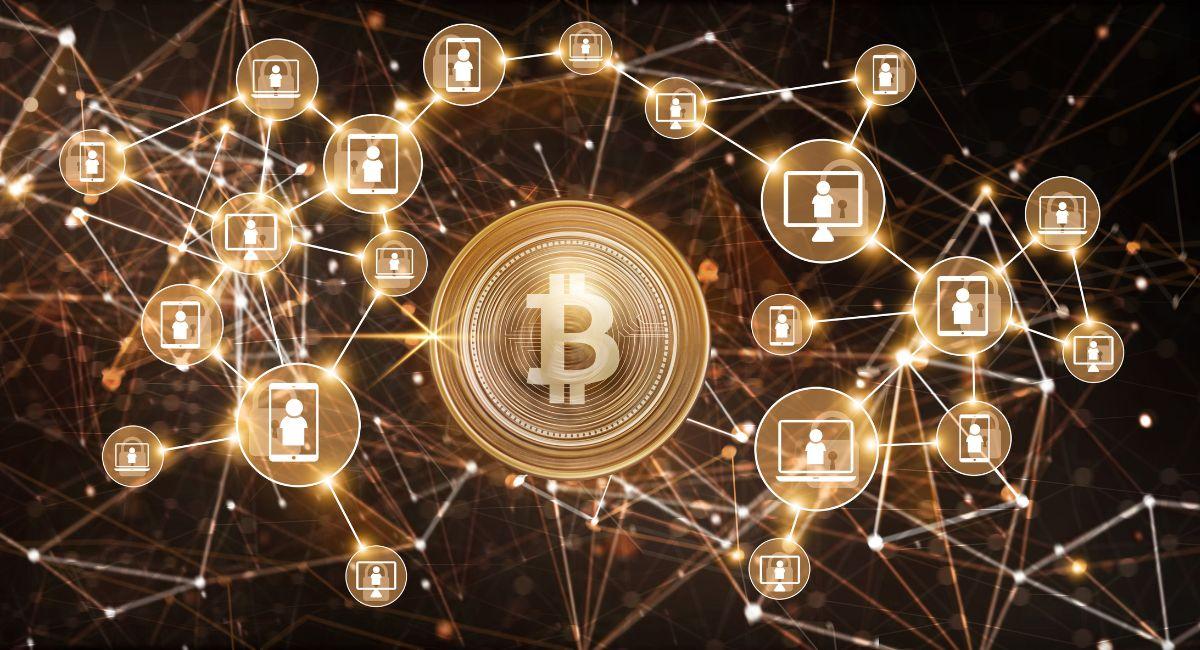Resolving Top NFT Landscape Challenges Through Layer 2 Solutions

Non-Fungible Tokens (NFTs) have emerged as a revolutionary force in the digital world, transforming how we perceive and trade digital assets. However, as the popularity of NFTs continues to soar, several challenges have surfaced, ranging from scalability issues to environmental concerns. Layer 2 solutions, built on top of existing blockchain networks, have garnered attention as a potential remedy for these challenges. In this in-depth exploration, we delve into the top 10 problems associated with NFTs and how Layer 2 solutions could offer viable solutions.
Problems of NFTs solved by Layer 2 solutions:

1. Scalability Concerns:
- Problem: The surge in NFT transactions has led to scalability issues on blockchain networks like Ethereum, resulting in slow confirmation times and high gas fees.
- Layer 2 Solution: Layer 2 solutions, such as sidechains and state channels, alleviate congestion on the main blockchain by processing a bulk of transactions off-chain. This not only accelerates transaction speeds but also reduces fees associated with minting and trading NFTs.
2. Environmental Impact:
- Problem: The energy consumption of some blockchain networks, notably Ethereum, has raised environmental concerns due to the Proof-of-Work (PoW) consensus mechanism.
- Layer 2 Solution: Layer 2 solutions often employ different consensus mechanisms, such as Proof-of-Stake (PoS) or hybrid models, which are more energy-efficient. By moving transactions off the main chain, Layer 2 contributes to the overall sustainability of NFT ecosystems.
3. High Gas Fees:
- Problem: The cost of executing transactions on the main blockchain can be prohibitive, especially for smaller-scale NFT creators and buyers.
- Layer 2 Solution: Layer 2 networks, by processing transactions off-chain or in a more efficient manner, significantly reduce gas fees associated with NFT operations, making participation in the market more accessible and cost-effective.
4. Interoperability Challenges:
- Problem: NFTs created on one blockchain may face challenges when interacting with NFTs on another, limiting the seamless transferability and utility of digital assets.
- Layer 2 Solution: Layer 2 solutions can facilitate interoperability by providing bridges between different blockchain networks. This allows NFTs to move fluidly between Layer 2 environments and the main chain, enhancing the overall connectivity of the NFT ecosystem.
5. Limited Smart Contract Functionality:
- Problem: Smart contracts associated with NFTs on certain blockchains may have limitations in terms of functionality and programmability.
- Layer 2 Solution: Layer 2 solutions often provide more flexible and customizable smart contract capabilities, enabling NFT creators to implement sophisticated functionalities, royalties, and programmable features that enhance the utility and value of their digital assets.
6. Onboarding Barriers:
- Problem: The onboarding process for users new to NFTs can be complex, involving multiple steps and interactions with cryptocurrency exchanges.
- Layer 2 Solution: Layer 2 networks often offer a more user-friendly and seamless onboarding experience, with simplified processes for creating, trading, and transferring NFTs. This helps lower barriers for new participants entering the NFT space.
7. Storage Limitations:
- Problem: Storing large and complex NFT files directly on the blockchain can pose challenges, leading to increased storage costs.
- Layer 2 Solution: Layer 2 solutions can leverage decentralized storage networks or IPFS (InterPlanetary File System) to efficiently store and retrieve NFT data. This not only reduces storage costs but also ensures the decentralized and persistent availability of NFT content.
8. Privacy Concerns:
- Problem: Certain blockchain networks may expose sensitive information related to NFT ownership and transactions, compromising user privacy.
- Layer 2 Solution: Layer 2 solutions often incorporate privacy-focused technologies, such as zero-knowledge proofs or cryptographic techniques, to enhance user privacy while still ensuring the transparency and integrity of the NFT ecosystem.
9. Marketplace Fragmentation:
- Problem: The NFT marketplace is currently fragmented across various platforms, making it challenging for users to discover, buy, and sell NFTs efficiently.
- Layer 2 Solution: Layer 2 solutions can facilitate the creation of decentralized NFT marketplaces that operate across multiple blockchains. This interoperability simplifies the user experience and provides a unified platform for NFT transactions.
Also, read – Top 10 NFT Liquidity Protocols Of 2023
How will Layer 2 solutions help the NFT creator community?

Layer 2 solutions hold immense potential in revolutionizing the landscape for Non-Fungible Token (NFT) creators, providing a range of benefits that address key challenges associated with scalability, cost, and usability on Layer 1 blockchains. Let’s delve into the vast details of how Layer 2 solutions will positively impact the NFT creator community:
1. Scalability and Increased Throughput:
- Challenge: On Layer 1 blockchains like Ethereum, scalability limitations often result in network congestion during peak times, causing slow transaction confirmations and high gas fees.
- Layer 2 Solution: Layer 2 solutions, such as sidechains and rollups, significantly enhance scalability by processing a bulk of transactions off-chain. This translates to faster transaction confirmations and increased throughput, allowing NFT creators to mint and trade digital assets more efficiently, especially during high-demand periods.
2. Cost Reduction and Accessibility:
- Challenge: High gas fees on Layer 1 blockchains can pose financial barriers for NFT creators, impacting both the minting process and the overall accessibility of NFTs.
- Layer 2 Solution: By leveraging Layer 2 solutions, NFT creators benefit from reduced transaction costs. Lower fees associated with minting and trading NFTs make it more economically viable for creators, democratizing access to the NFT market. This increased accessibility encourages a more diverse and inclusive community of creators.
3. Improved User Experience:
- Challenge: Layer 1 transactions can be slow and cumbersome, leading to a suboptimal user experience for NFT creators and collectors.
- Layer 2 Solution: Layer 2 solutions streamline the user experience by providing faster transaction confirmations. The improved responsiveness enhances the overall usability of NFT platforms, making it more attractive for creators and users alike. This improved user experience contributes to increased engagement within the NFT ecosystem.
4. Environmental Sustainability:
- Challenge: The environmental impact of Proof-of-Work (PoW) consensus mechanisms on Layer 1 blockchains, like Ethereum, has raised concerns within the NFT community.
- Layer 2 Solution: Many Layer 2 solutions utilize alternative consensus mechanisms, such as Proof-of-Stake (PoS) or optimistic rollups, which are more energy-efficient. By adopting Layer 2 solutions with eco-friendly designs, NFT creators contribute to a more sustainable and environmentally conscious blockchain ecosystem.
5. Interoperability and Cross-Platform Integration:
- Challenge: NFTs created on one blockchain may face challenges when interacting with platforms running different blockchain technologies, limiting their utility.
- Layer 2 Solution: Layer 2 solutions foster interoperability by providing bridges between different blockchain networks. This means that NFTs can seamlessly move between Layer 2 environments and the main chain, enhancing the cross-platform integration of digital assets. NFT creators can reach a wider audience by tapping into diverse blockchain ecosystems.
6. Innovative Smart Contract Functionalities:
- Challenge: Smart contracts on some Layer 1 blockchains may have limitations in terms of functionality and programmability.
- Layer 2 Solution: Layer 2 networks often offer more flexible and customizable smart contract capabilities. This allows NFT creators to implement sophisticated functionalities, royalties, and programmable features, providing new opportunities for innovation in the NFT space.
7. Enhanced Security and Privacy Measures:
- Challenge: Security concerns and privacy issues can impact the confidence of creators and users in the NFT ecosystem.
- Layer 2 Solution: Layer 2 solutions may incorporate advanced security measures and privacy-focused technologies, such as zero-knowledge proofs. This ensures that transactions and data associated with NFTs remain secure and private, instilling confidence in creators and users regarding the integrity of the NFT platform.
8. Real-Time Market Dynamics:
- Challenge: Slow transaction confirmations during periods of high demand can hinder real-time market dynamics and opportunities.
- Layer 2 Solution: Layer 2 solutions, designed to handle significant transaction volumes, contribute to real-time market updates. This allows NFT creators to respond swiftly to market trends, capitalize on opportunities, and maintain an agile presence in the dynamic NFT market.
9. Fractional Ownership and Micropayments:
- Challenge: Traditional NFTs often require users to purchase an entire digital asset, limiting accessibility for those with smaller budgets.
- Layer 2 Solution: Layer 2 solutions enable fractional ownership, allowing creators to tokenize and sell fractions of NFTs. This opens up the market to a broader audience, including those with smaller budgets. Additionally, Layer 2 networks often facilitate cost-effective micropayments, expanding possibilities for smaller transactions within the NFT ecosystem.
10. Community Engagement and Collaboration:
- Challenge: Limited community governance and engagement may impact the decentralized nature of the NFT ecosystem.
- Layer 2 Solution: Layer 2 solutions often incorporate decentralized governance mechanisms, empowering the NFT creator community to actively participate in decision-making processes. This fosters a sense of community ownership and collaboration, contributing to the decentralized and inclusive ethos of the NFT space.
11. Enhanced Metadata and Dynamic Content:
- Challenge: Storing rich metadata and dynamic content associated with NFTs can be challenging on some Layer 1 networks.
- Layer 2 Solution: Layer 2 solutions provide robust support for metadata storage and dynamic content, enabling NFT creators to include detailed information, multimedia, and dynamic updates. This enriches the storytelling and immersive qualities of NFTs, enhancing their value and appeal.
In summary, the integration of Layer 2 solutions significantly elevates the capabilities and potential of the NFT creator community. From scalability improvements and cost reduction to enhanced user experiences and environmental sustainability, the adoption of Layer 2 solutions empowers NFT creators to navigate challenges and unlock new opportunities within the evolving digital asset landscape. The synergy between NFTs and Layer 2 solutions is poised to reshape the future of decentralized digital ownership, fostering a more vibrant, accessible, and sustainable NFT ecosystem.
Think about how much progress we made in 2021:
• Crypto gaming + metaverse
• DeFi and DAOs
• Layer 2 solutions
• NFTs
• Hugely improved L1s
• CEX infrastructure
• Efficient AMMs and DEXs
• Nation state adoption
• Institutional adoptionProgress isn’t price.
— Miles Deutscher (@milesdeutscher) July 7, 2022
How will layer 2 solutions solve the NFT Fractional Ownership and Micropayments problem?

Layer 2 solutions are poised to revolutionize the landscape of Non-Fungible Token (NFT) fractional ownership and micropayments, introducing innovative approaches that address challenges and unlock new possibilities for creators and users alike. Let’s delve into the vast details of how Layer 2 solutions will play a pivotal role in solving the NFT fractional ownership and micropayments problem:
NFT Fractional Ownership:
1. Breaking Down Ownership Barriers:
- Challenge: Traditional NFTs often require users to purchase an entire digital asset, limiting accessibility for those with smaller budgets.
- Layer 2 Solution: Layer 2 solutions facilitate fractional ownership by allowing users to tokenize and trade fractions of NFTs. This innovative approach breaks down barriers, enabling a broader audience to participate in the NFT market. Users can invest in a portion of high-value NFTs, promoting inclusivity and democratizing access to digital assets.
2. Smart Contracts and Governance:
- Challenge: Implementing fractional ownership requires sophisticated smart contracts to manage ownership distribution and governance.
- Layer 2 Solution: Layer 2 networks often offer more robust and customizable smart contract functionalities. This allows creators to design contracts that automatically manage fractional ownership, distribute rewards, and enable governance mechanisms. Smart contracts on Layer 2 enhance the efficiency and transparency of fractional ownership structures, providing a seamless experience for both creators and fractional owners.
3. Liquidity and Trading:
- Challenge: Traditional ownership structures may limit the liquidity of NFTs, as selling or transferring fractions can be complex.
- Layer 2 Solution: Layer 2 solutions enhance liquidity by facilitating the seamless trading of fractionalized NFTs. Users can buy, sell, and trade fractions on Layer 2 networks with lower transaction costs and faster confirmation times. This increased liquidity benefits both fractional owners looking to exit their positions and potential buyers seeking investment opportunities.
4. Community Engagement:
- Challenge: Limited community engagement in traditional ownership models may hinder the decentralized nature of NFT platforms.
- Layer 2 Solution: Layer 2 networks often incorporate decentralized governance mechanisms, empowering fractional owners to participate in decision-making processes. This community engagement fosters a sense of ownership and collaboration, aligning with the decentralized ethos of the blockchain space. Fractional owners can collectively influence the destiny of the NFTs they hold.
Micropayments in NFTs:
1. Cost-Effective Transactions:
- Challenge: Traditional Layer 1 transactions can be cost-prohibitive for micropayments, impacting the feasibility of smaller transactions.
- Layer 2 Solution: Layer 2 solutions significantly reduce transaction costs, making micropayments economically viable. Users can engage in smaller transactions, such as micro-tipping or purchasing low-value digital assets, without the burden of high fees. This opens up new avenues for creators to monetize their content and enhances the overall economic viability of the NFT ecosystem.
2. Efficient Transaction Processing:
- Challenge: Slow transaction confirmations on Layer 1 blockchains can hinder the efficiency of micropayments.
- Layer 2 Solution: Layer 2 solutions process transactions off-chain or in a more efficient manner, ensuring faster confirmation times. This responsiveness is particularly crucial for micropayments, where immediate transaction processing is essential. Layer 2 networks contribute to a more seamless and real-time micropayment experience for users.
3. Monetization for Content Creators:
- Challenge: Content creators may struggle to monetize their work through micropayments due to high fees and processing delays.
- Layer 2 Solution: Layer 2 solutions empower content creators by providing a cost-effective infrastructure for micropayments. Creators can receive direct and instant compensation for their content, fostering a more direct relationship with their audience. This not only benefits individual creators but also contributes to a flourishing ecosystem of diverse and independently monetized digital content.
4. Micro-Tipping and Social Interactions:
- Challenge: Facilitating micro-tipping and small transactions for social interactions may be impractical on Layer 1.
- Layer 2 Solution: Layer 2 solutions enable micro-tipping and small transactions with minimal fees, encouraging social interactions within the NFT community. Users can support creators, engage in microtransactions, and participate in social platforms without the financial friction associated with traditional blockchain transactions. This enhances the vibrancy and engagement levels within NFT communities.
5. Ecosystem Growth and Innovation:
- Challenge: High fees for small transactions may stifle experimentation and innovation within the NFT ecosystem.
- Layer 2 Solution: By providing a cost-effective environment for micropayments, Layer 2 solutions stimulate innovation. Creators can explore new business models, interactive experiences, and experimental content that leverage micropayments. This fosters a dynamic and creative NFT ecosystem where content creators are incentivized to push boundaries and explore novel avenues for user engagement.
Integration of Fractional Ownership and Micropayments:
1. Diverse Monetization Models:
- Layer 2 solutions enable the integration of fractional ownership and micropayments, allowing creators to explore diverse monetization models. Creators can tokenize high-value assets, offer fractional ownership, and simultaneously leverage micropayments for content access or interaction. This flexibility empowers creators to tailor their monetization strategies to suit their unique offerings and audience preferences.
2. NFT Bundles and Packages:
- Creators can bundle NFTs, combining high-value assets with more accessible fractionalized pieces. Users can purchase fractions of bundles through cost-effective micropayments, unlocking a curated collection of digital assets. This approach enhances the marketability of NFTs, catering to both collectors interested in fractional ownership and users seeking affordable, bundled content.
3. Community-Curated Projects:
- Community-driven projects can leverage the integration of fractional ownership and micropayments on Layer 2 networks. Creators can initiate projects where fractional ownership decisions and funding are driven by community micropayments. This decentralized approach promotes community engagement, collective decision-making, and the collaborative creation of NFT projects.
Conclusion:
As the NFT landscape continues to evolve, addressing these challenges is pivotal for the sustained growth and inclusivity of the digital asset ecosystem. Layer 2 solutions emerge as a key enabler, providing scalable, sustainable, and interoperable frameworks that enhance the functionality and accessibility of NFTs. Through these innovations, the NFT space can not only overcome current limitations but also pave the way for a more decentralized, user-friendly, and interconnected digital asset future.




























































